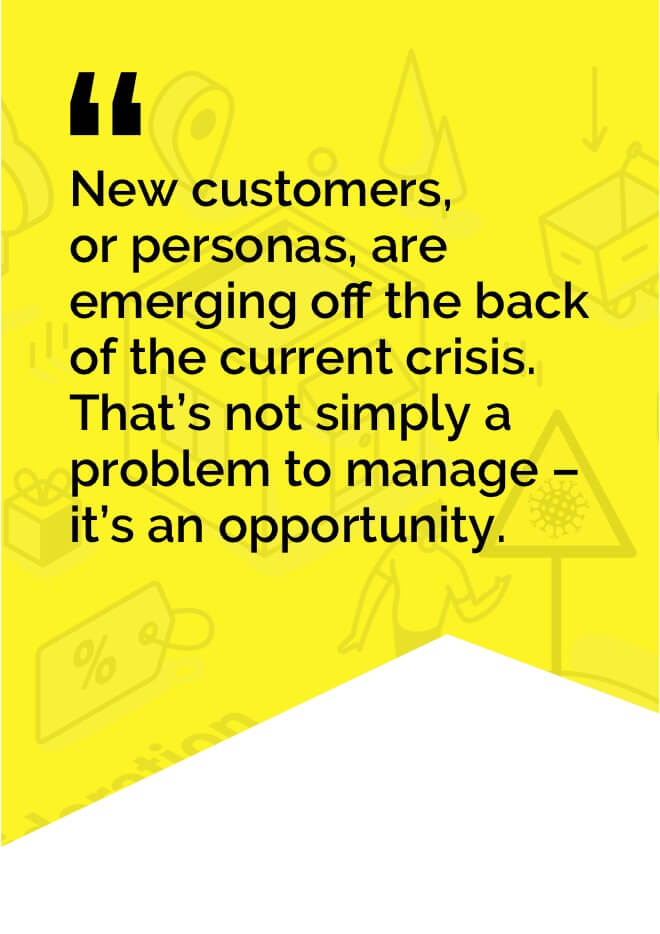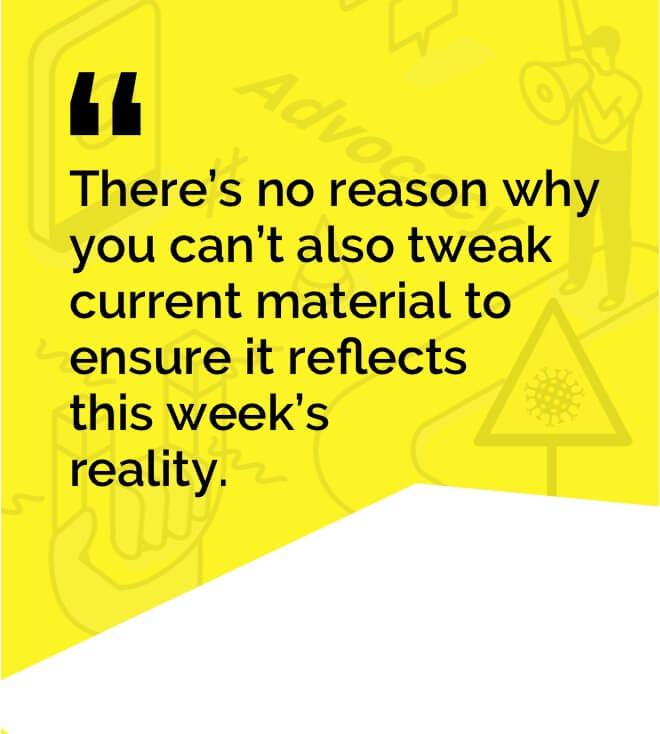As COVID-19 has reshaped life as we know it, understanding your
customer has never been so critical.
As consumers, our way of life has been upended with the arrival of a global pandemic. That, in turn, has had an enormous impact on how we engage with brands – how we access them and what we demand of them.
As marketers, the challenges are only too clear. For many, campaign material became outdated overnight, and tried and tested customer personas suddenly harked back to a golden, bygone era.
But it’s not all doom and gloom. While change can be daunting, it also breeds innovation, and that can be hugely positive. It may even enable some of us to connect with our audiences like never before.
Nailing the personal
Take my family’s internet provider. Earlier this year they had no presence in our lives whatsoever. We paid them; we used their product. But over the past few months we came to know them on a whole new level – as they sent us emails from their kitchen table to ours, sharing new ways to manage kids’ excessive screen time during lockdown.
At Six Black Pens, we’ve seen this successful adaptation among several of our clients, as we support them in their scramble to adjust to the new environment.
Business Australia, for instance, did a fantastic job of reformulating its marketing plans when the TVC we’d just helped finalise for them no longer reflected the reality of people’s lives.
Business Australia pivots from TVC to social media in a fast response to COVID-19
Know your customer? Look again
None of these challenges, or opportunities, can be effectively addressed without genuinely understanding, and empathising with, your customer. That’s what customer journey mapping is all about – putting yourself in your customers’ shoes through personas to see what their needs are and where these will take them in relation to your business.
While not so long ago you could feel reasonably confident that your customers’ behaviour – and therefore your personas – would remain fairly static, many now require significant reworking, this week and perhaps next week as well.
But it doesn’t stop there.

New customers, or personas, are emerging off the back of the current crisis. That’s not simply a problem to manage, it’s an opportunity. Consider how your family and friends have spent time cooped up at home. You may be the proud acquaintance of a re-inventor, someone who is taking the time to improve themselves – mentally, physically and financially – so that when they emerge from the crisis they’re in a much better space than when they entered it.
What about the social sponge? Those are the people who are craving more information and more interaction in the current climate, spending considerable time on news and social media channels as a result.
They’re in stark contrast to the rabbit in headlights – the consumer who is overwhelmed by most things just now, whether that’s the overload of information, or the new digital requirements, or generally organising their new reality in isolation. Many of them might be paralysed from acting at all.
These new personas could well represent potential customers for some businesses – as may the many other people who crave support just now.
The bigger challenge
The challenge is to recognise the need for adaptation, and then to work out what you can do to address that. Of course, there may be need for further adaptation on a monthly or even weekly basis, and responding swiftly and meaningfully may seem daunting, if not entirely impractical.
But it’s not impossible. The key to doing it successfully is to have ongoing relationships – ongoing conversations – with your customers. That way, you can quickly pick up on changes in sentiment and behaviour and react on time and on point.
Achieving more with less
You also don’t have to have all the bells and whistles of your previous six- to eight-month campaigns. Doubtless, many businesses will be looking for ways to respond on a smaller budget and with far fewer resources than they once had. That’s possible and even beneficial.
Business Australia is not the only company out there to move from using live people to animation, and from TV to social media, allowing for a simpler model that was not only faster but ultimately more affordable.
And there are other ways to save money. Consolidating your comms, for instance, can allow you to target a larger group through the one campaign. There’s no reason why you can’t also tweak current material to ensure it reflects this week’s reality.

Future-proofing your brand
There are so many unknowns ahead of us. Yet that shouldn’t prevent us from acting now. The fact is, customer wants, needs and journeys will continue to evolve over the coming months – whether or not there is a new surge in COVID-19 cases, whether or not restrictions ease further – and, should a brand carry on as if nothing has changed, it risks being forgotten, or worse.
How brands act today, and the long-term lessons they take from that, are ultimately what they’re going to be remembered for. That includes customer journey mapping, which will continue to be a key pillar in any customer messaging.




